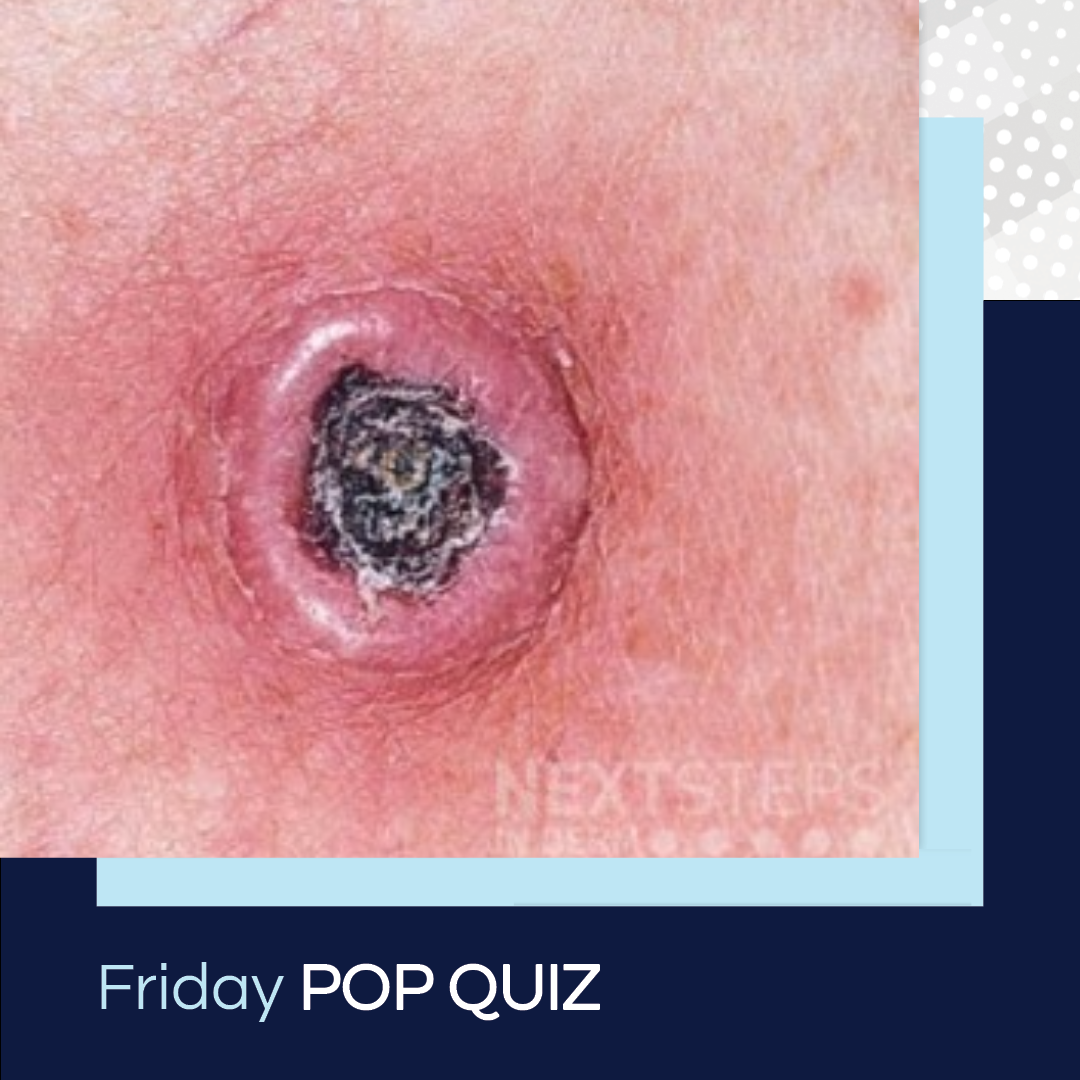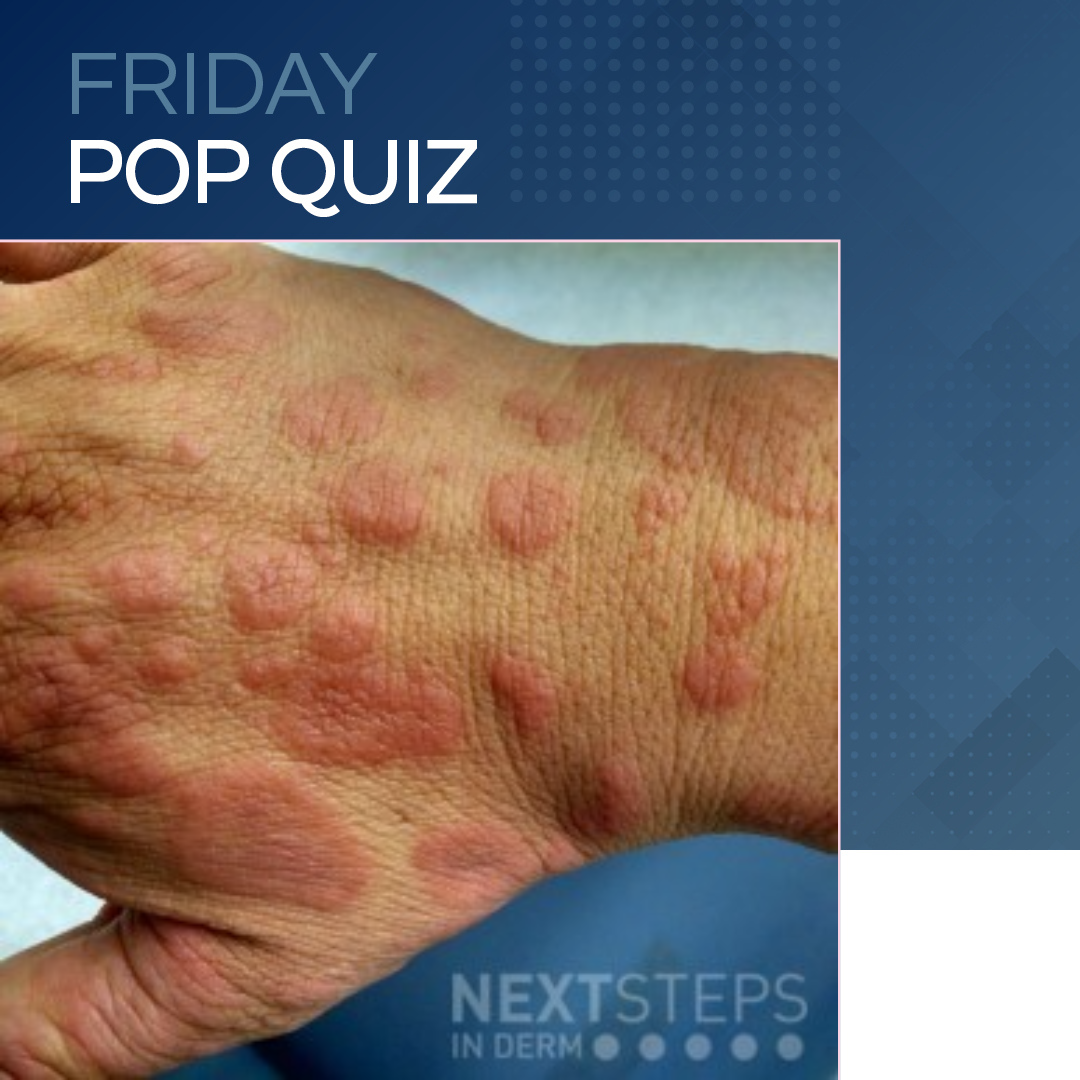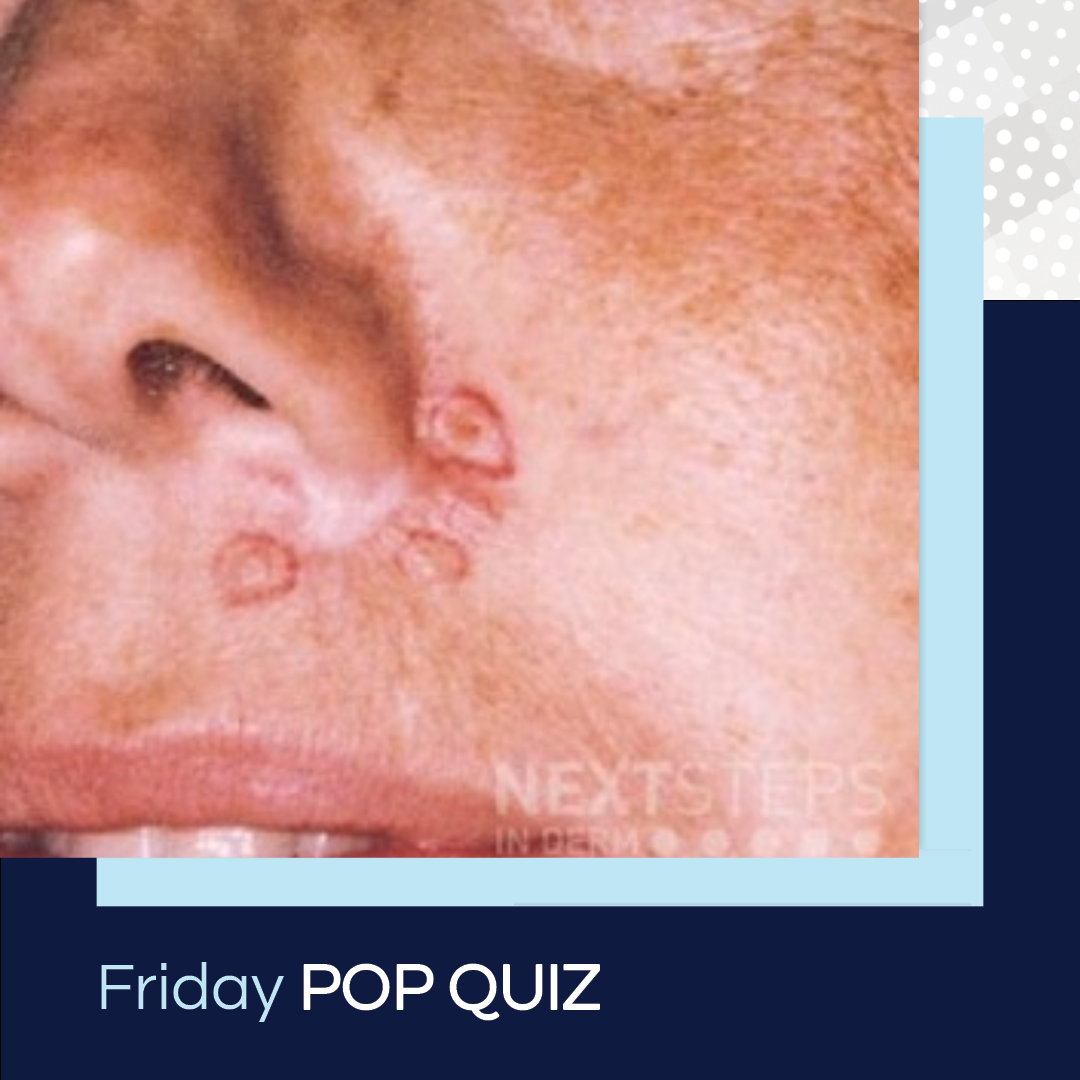Keratoacanthomas – Friday Pop Quiz 7/26/2024
 This syndrome presents with multiple keratoacanthomas appearing suddenly during childhood or adolescence and inherited in an autosomal dominant pattern:
A. Ferguson-Smith
B. Grzybowski
C. Gorlin
D. KA centrifugum
E. Buschke-Lowenstein
To find out the correct answer and read the explanation, click here. …
This syndrome presents with multiple keratoacanthomas appearing suddenly during childhood or adolescence and inherited in an autosomal dominant pattern:
A. Ferguson-Smith
B. Grzybowski
C. Gorlin
D. KA centrifugum
E. Buschke-Lowenstein
To find out the correct answer and read the explanation, click here. …
 This syndrome presents with multiple keratoacanthomas appearing suddenly during childhood or adolescence and inherited in an autosomal dominant pattern:
A. Ferguson-Smith
B. Grzybowski
C. Gorlin
D. KA centrifugum
E. Buschke-Lowenstein
To find out the correct answer and read the explanation, click here. …
This syndrome presents with multiple keratoacanthomas appearing suddenly during childhood or adolescence and inherited in an autosomal dominant pattern:
A. Ferguson-Smith
B. Grzybowski
C. Gorlin
D. KA centrifugum
E. Buschke-Lowenstein
To find out the correct answer and read the explanation, click here. … Continue reading "Keratoacanthomas – Friday Pop Quiz 7/26/2024"


 A 59 year old African American woman presents with the following lesion. She states she is currently applying topical clobetasol and takes oral hydroxychloroquine, prednisone, and mycophenolate daily. She is interested in discussing ways to improve the appearance of this lesion. Which of the following is NOT true?
A. Patient should contine with strict photoprotection given the photosensitiv …
A 59 year old African American woman presents with the following lesion. She states she is currently applying topical clobetasol and takes oral hydroxychloroquine, prednisone, and mycophenolate daily. She is interested in discussing ways to improve the appearance of this lesion. Which of the following is NOT true?
A. Patient should contine with strict photoprotection given the photosensitiv …  Which of the following is the most likely diagnosis?
A. Erythema multiforme
B. Annular urticaria
C. Secondary syphilis
D. Fixed drug eruption
E. Polymorphous light eruption
To find out the correct answer and read the explanation, click here. …
Which of the following is the most likely diagnosis?
A. Erythema multiforme
B. Annular urticaria
C. Secondary syphilis
D. Fixed drug eruption
E. Polymorphous light eruption
To find out the correct answer and read the explanation, click here. …  What of the following is the most appropriate treatment for this patient?
A. Doxycycline
B. Terbinifine oral
C. Adalimumab
D. Acitretin
E. Ivermectin
To find out the correct answer and read the explanation, click here. …
What of the following is the most appropriate treatment for this patient?
A. Doxycycline
B. Terbinifine oral
C. Adalimumab
D. Acitretin
E. Ivermectin
To find out the correct answer and read the explanation, click here. …  Which of the following is not a major diagnostic criteria for nevoid basal cell carcinoma syndrome?
A. Development of >2 BCCs or 1 BCC before the age of 20
B. Odontogenic keratocysts of jaw
C. Palmar or plantar pits (3 or more)
D. Calcification of the falx
E. All of the above are features of nevoid BCC syndrome
To find out the correct answer and read the explanation, click h …
Which of the following is not a major diagnostic criteria for nevoid basal cell carcinoma syndrome?
A. Development of >2 BCCs or 1 BCC before the age of 20
B. Odontogenic keratocysts of jaw
C. Palmar or plantar pits (3 or more)
D. Calcification of the falx
E. All of the above are features of nevoid BCC syndrome
To find out the correct answer and read the explanation, click h …